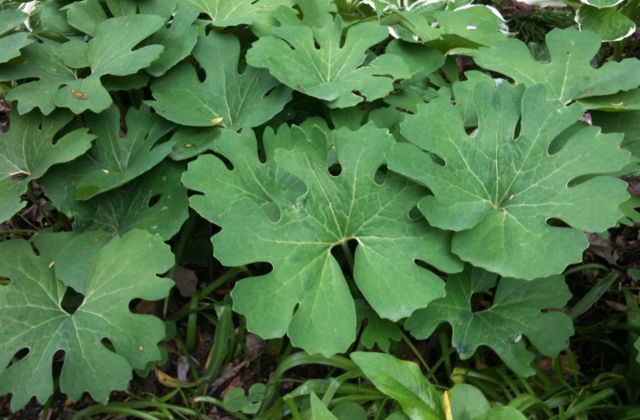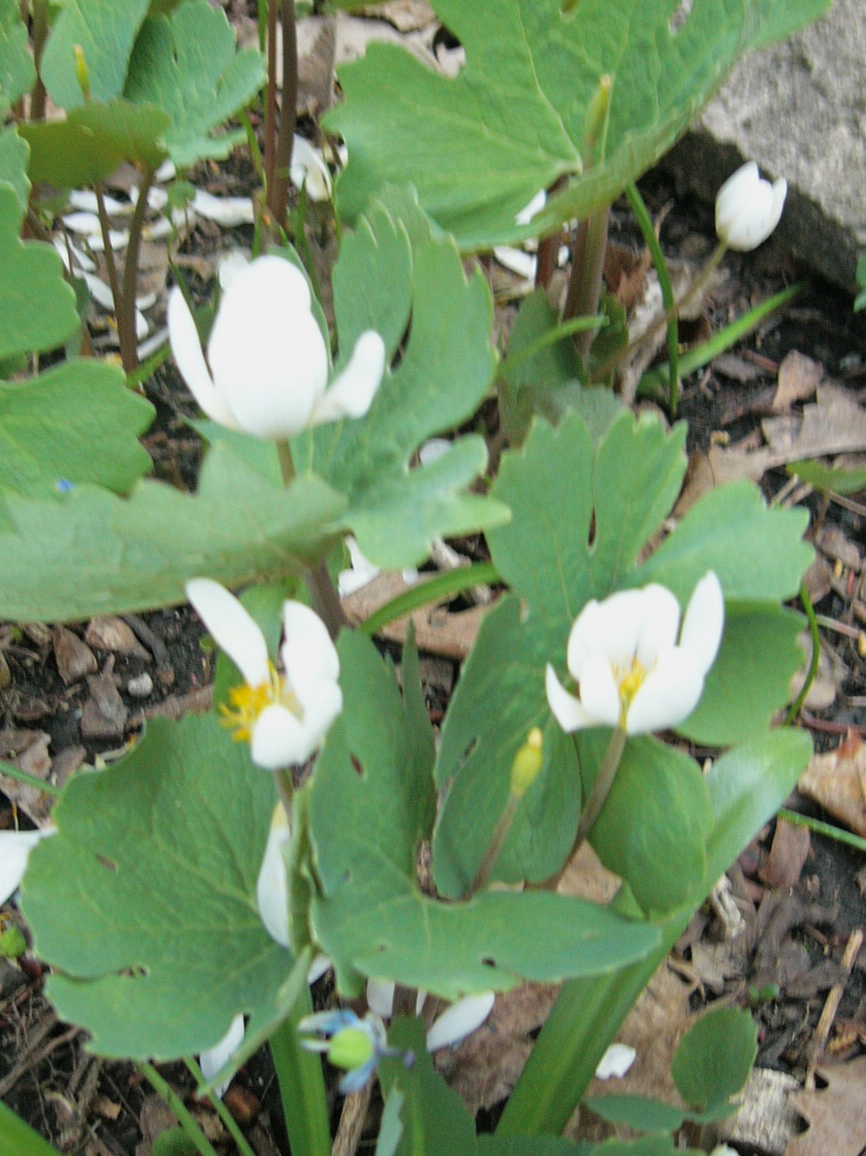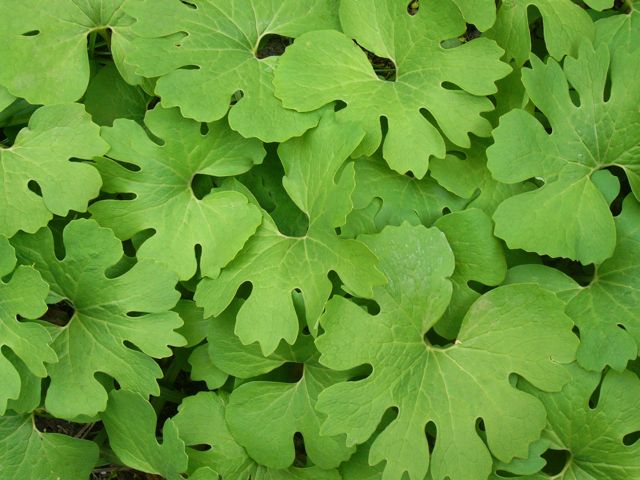Bloodroot
 I suspect that the scary-sounding common name of Sanguinaria canadensis, a member of the poppy family, is the main reason you don't see this shade perennial much in gardens or even in nurseries. I found it listed in some native plant guides as yet another candidate for my shady, moist woodlands area, and finally scored some from an elderly greenhouse worker in Chicago who brought me some from her own garden. The name, however, comes from the fact that Native Americans used the root to make a red dye. You could do the same, but be careful to wash your hands after handling, because the roots are unpleasant and even poisonous to eat, containing various alkaloids.
I suspect that the scary-sounding common name of Sanguinaria canadensis, a member of the poppy family, is the main reason you don't see this shade perennial much in gardens or even in nurseries. I found it listed in some native plant guides as yet another candidate for my shady, moist woodlands area, and finally scored some from an elderly greenhouse worker in Chicago who brought me some from her own garden. The name, however, comes from the fact that Native Americans used the root to make a red dye. You could do the same, but be careful to wash your hands after handling, because the roots are unpleasant and even poisonous to eat, containing various alkaloids.

Bloodroot likes and needs water and will wilt in late summer heat if ignored, but comes back strong in the spring and spreads to form a ground cover that is taller than some. You could use it as a taller layer above wild ginger. I've had good luck with it in a spot downhill of a downspout, where I used to put annuals with only mixed success.

- Log in to post comments